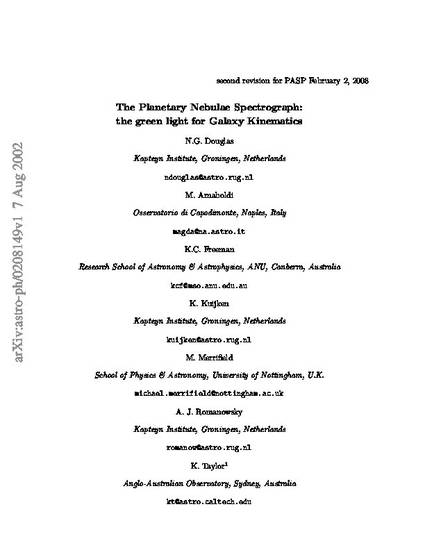
Article
The Planetary Nebula Spectrograph: the green light for galaxy kinematics
Publications of the Astronomical Society of the Pacific
(2002)
Abstract
Planetary nebulae (PNe) are now well established as probes of galaxy dynamics and as standard candles in distance determinations. Motivated by the need to improve the efficiency of planetary nebulae searches and the speed with which their radial velocities are determined, a dedicated instrument—the Planetary Nebula Spectrograph, or PN.S—has been designed and commissioned at the 4.2 m William Herschel Telescope. The high optical efficiency of the spectrograph results in the detection of typically ∼150 PNe in galaxies at the distance of the Virgo Cluster in one night of observations. In the same observation, the radial velocities are obtained with an accuracy of ∼20 km s .
Disciplines
Publication Date
2002
Publisher Statement
Copyright © 2002 Published by The University of the Chicago Press on behalf of Publications of the Astronomical Society of the Pacific.. All rights reserved. The published article may be found at :http://dx.doi.org/10.1086/342765.
Citation Information
N. G. Douglas, M. Arnaboldi, K. C. Freeman, K. Kuijken, et al.. "The Planetary Nebula Spectrograph: the green light for galaxy kinematics" Publications of the Astronomical Society of the Pacific Vol. 114 Iss. 801 (2002) Available at: http://works.bepress.com/aaron_romanowsky/64/
